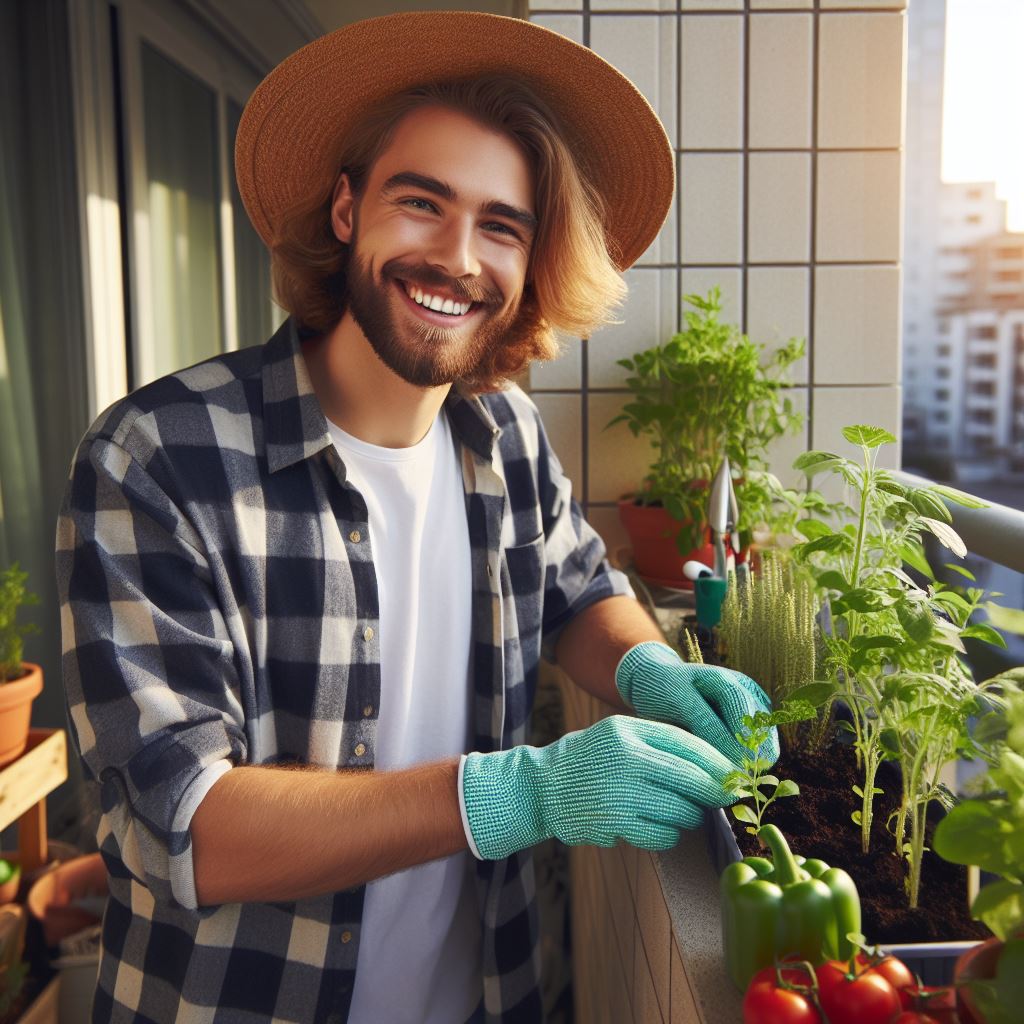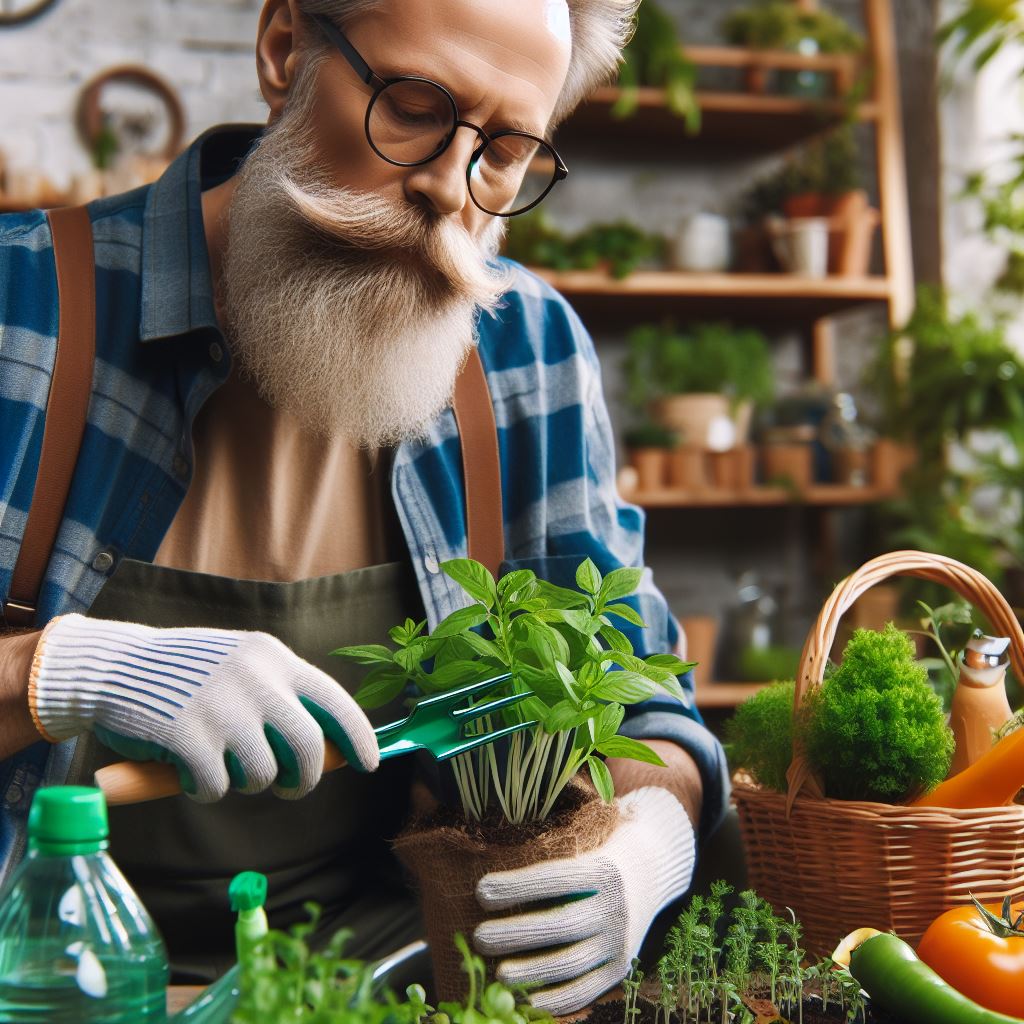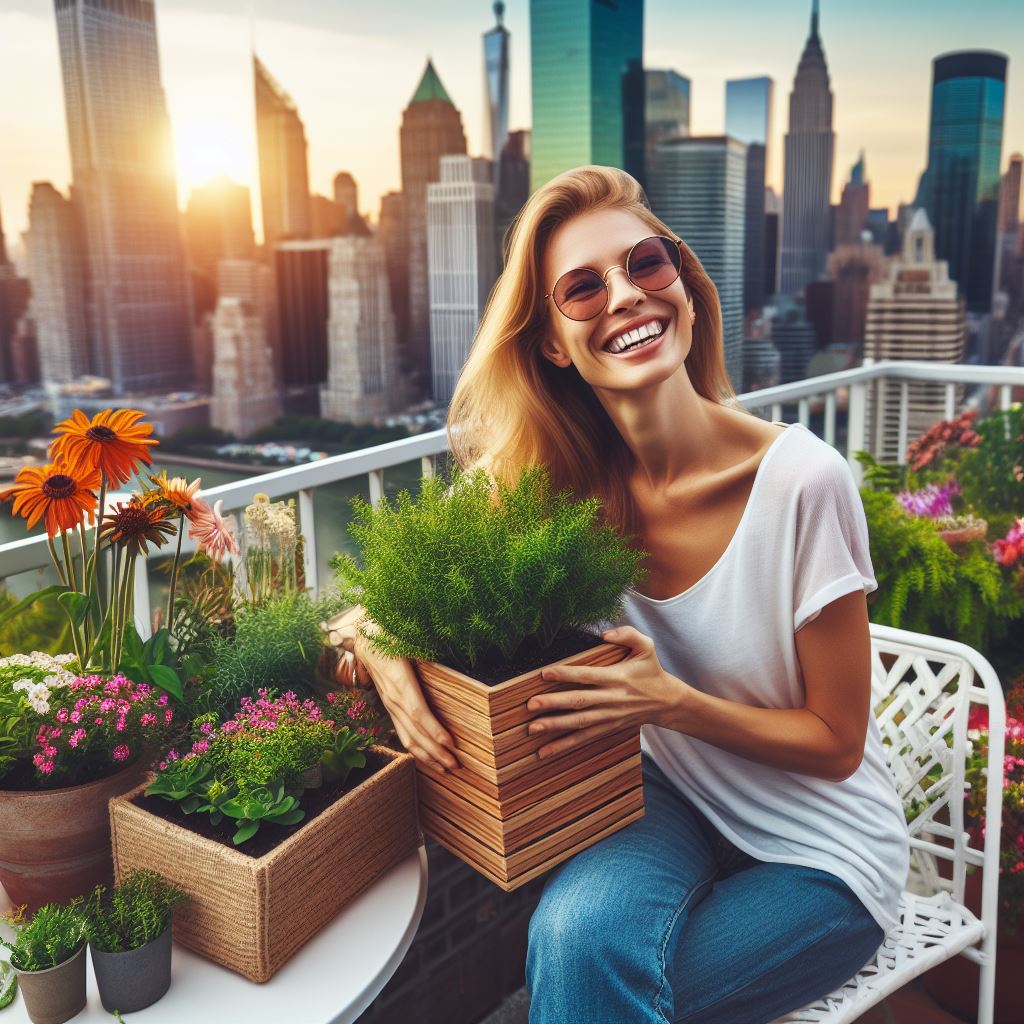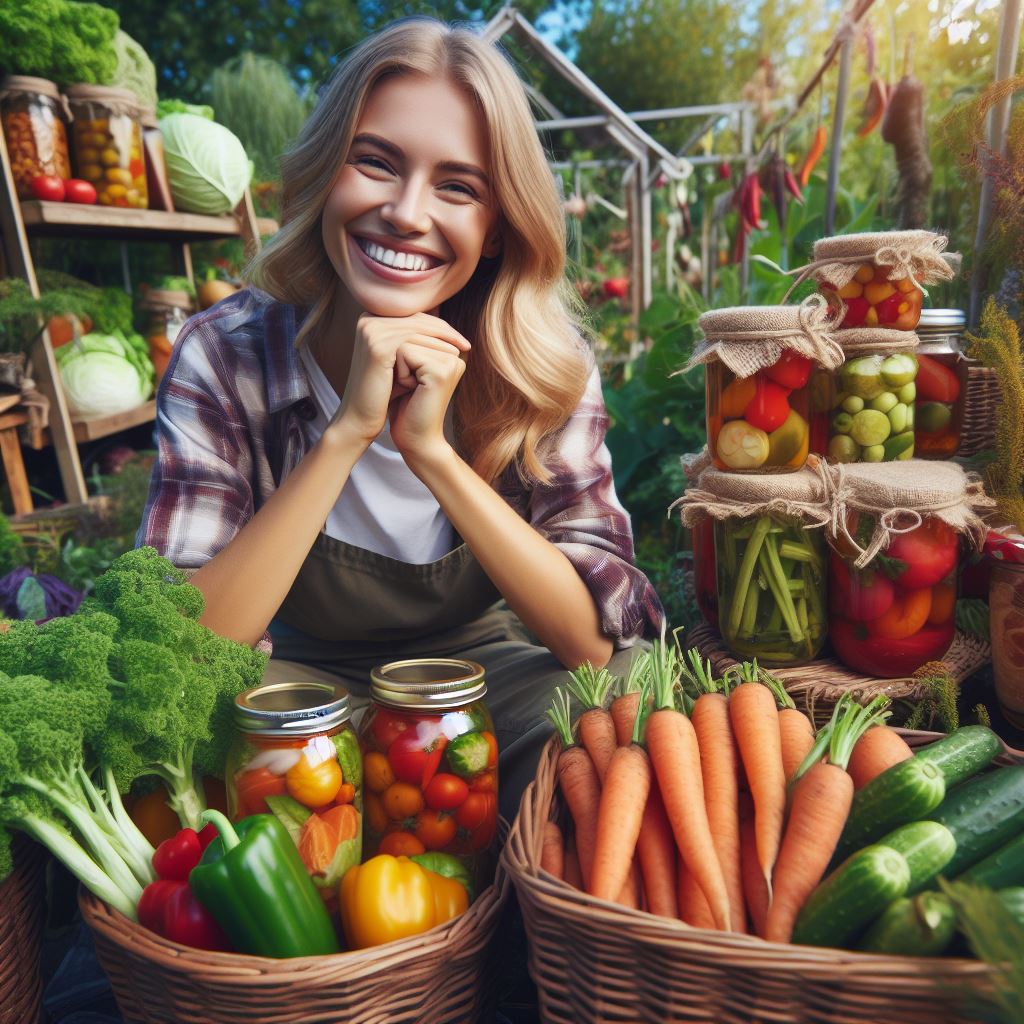Introduction
Importance of pollinators in gardening
Pollinators play a crucial role in gardening by aiding in the reproduction of plants.
They transfer pollen between flowers, enabling the production of fruits, seeds, and new plants.
Without pollinators, many plants we rely on for food, medicine, and aesthetics would cease to exist.
The concept of pollinator-friendly gardening
Pollinator-friendly gardening is a concept that focuses on creating environments that attract and support these essential creatures.
It involves planting flowers, shrubs, and trees that provide nectar and pollen as food sources, while also offering shelter and nesting sites.
By providing these resources, we encourage the presence and abundance of pollinators in our gardens.
In addition to bees, other pollinators like butterflies, moths, beetles, flies, and hummingbirds also contribute to the pollination process.
Each has unique behaviors and preferences, so planting a diverse array of flowers with different shapes, colors, and scents can attract a variety of pollinators.
Creating a pollinator-friendly garden is beneficial not only to our local ecosystem but also to our own well-being.
By enhancing biodiversity and supporting the pollination of plants, we promote a more sustainable and resilient environment.
Moreover, attracting pollinators to our gardens can be a delightful and educational experience as we observe their fascinating behaviors and interactions.
In this blog post, we will explore different strategies and techniques for establishing a thriving pollinator-friendly garden.
From selecting the right plants to providing suitable habitats, we will discover how to create an inviting space for bees and other pollinators.
Let’s dive in and explore the world of pollinator-friendly gardening!
Benefits of Pollinator-Friendly Gardening
Increased pollination
- Pollinator-friendly gardening attracts bees, butterflies, and other insects, increasing pollination rates.
- More pollination leads to improved fruit set and seed production in garden plants.
- By providing a suitable habitat, pollinator-friendly gardens create a conducive environment for pollinators to thrive.
- Bees and other pollinators transfer pollen from one flower to another, ensuring fertilization and genetic diversity.
- The presence of diverse pollinators helps in cross-pollination, leading to healthier and more robust plants.
Improved crop yields
- Adequate pollination directly impacts crop yields, making pollinator-friendly gardening essential for farmers and gardeners.
- Pollinators facilitate the reproduction and fruiting of various crops, resulting in larger and tastier yields.
- Fruits, vegetables, and nuts grown in pollinator-friendly gardens often have better texture, flavor, and appearance.
- Without proper pollination, some crops may experience reduced yields or even fail to produce fruits entirely.
- By encouraging pollinators, gardeners enhance the productivity and profitability of their crops.
Biodiversity preservation
- Pollinator-friendly gardening promotes the conservation of diverse plant species, enhancing overall biodiversity.
- By providing food and habitat, such gardens support a wide array of pollinators, including rare and endangered species.
- Biodiversity preservation is crucial for the stability and resilience of ecosystems, helping them adapt to environmental changes.
- Plants and pollinators form intricate relationships, and conserving one promotes the survival of the other.
- By fostering biodiversity, pollinator-friendly gardens contribute to the preservation of natural heritage and ecological balance.
Environmental sustainability
- Pollinator-friendly gardening plays a vital role in maintaining a sustainable environment.
- By creating gardens that support pollinators, individuals contribute to the conservation of ecosystems and overall environmental health.
- Pollinators often act as indicators of ecological well-being, reflecting the quality and balance of ecosystems.
- Healthy ecosystems, in turn, provide essential services such as water purification, soil fertility, and climate regulation.
- Supporting pollinators through gardening fosters a sense of environmental responsibility and promotes a greener, more sustainable world.
In general, pollinator-friendly gardening offers numerous benefits, including increased pollination rates, improved crop yields, biodiversity preservation, and environmental sustainability.
Transform Your Agribusiness
Unlock your farm's potential with expert advice tailored to your needs. Get actionable steps that drive real results.
Get StartedBy creating gardens that attract and support pollinators, individuals can make a significant impact on the health of both their gardens and the surrounding ecosystem.
So, let’s embrace pollinator-friendly gardening and play our part in conserving the invaluable services that bees and other pollinators provide.
Read: Small Space, Big Harvest: Container Ideas
Understanding Bees – The Primary Pollinators
Role of Bees in Pollination
Bees play a pivotal role in pollination, enabling the reproduction of numerous plant species.
They act as efficient transporters of pollen, aiding in the fertilization process.
Through their foraging behavior, bees transfer pollen between flowers, facilitating the growth of fruits, vegetables, and seeds.
Their pollination services contribute to about one-third of global food production.
Without bees, many of our favorite foods and thriving ecosystems would cease to exist.
Different Types of Bees and Their Characteristics
Bees are incredibly diverse, with over 20,000 known species worldwide.
The most well-known group are the honeybees, which live in complex colonies and produce honey.
Bumblebees, on the other hand, are known for their larger size, fuzzy appearance, and buzzing flight.
Other types of bees include solitary bees, mason bees, leafcutter bees, and carpenter bees.
Each species has unique characteristics, such as preferred nesting habits and preferred types of flowers for foraging.
Understanding these differences can help you design a garden that caters to specific bee species.
Importance of Providing Suitable Habitats and Food Sources for Bees
Bees require suitable habitats and a variety of food sources to thrive and perform their crucial role as pollinators.
Providing diverse flowering plants throughout the growing season ensures bees have access to nectar and pollen.
Planting native wildflowers, blooming trees, and shrubs can significantly contribute to bee conservation efforts.
Creating suitable nesting sites, such as bee hotels, can also encourage nesting behavior and support bee populations.
Avoiding the use of pesticides and promoting organic gardening practices further aids in maintaining a healthy bee-friendly environment.
By cultivating bee-friendly habitats, we can enhance pollination and preserve the essential services bees provide to ecosystems and food production.
Read: Grow Your Own Organic Herbs at Home
Other Pollinators and Their Contributions
Butterflies and their role as secondary pollinators
- Butterflies, with their vibrant colors, play a crucial role in pollination.
- As they feed on nectar, butterflies unintentionally transfer pollen from one flower to another.
- They have long proboscis that allows them to reach the nectar hidden in deep flower tubes.
- Butterflies are attracted to brightly colored flowers with wide landing platforms.
- By planting nectar-rich plants and flowers, you can create a welcoming habitat for butterflies.
- Some common butterfly-pollinated plants include milkweed, asters, butterfly bushes, and lantana.
- As secondary pollinators, butterflies contribute to plant reproduction and biodiversity in pollinator gardens.
- By attracting and supporting butterflies, you can enhance the pollination process in your garden.
Importance of attracting and supporting other insects like moths and beetles
- In addition to bees and butterflies, moths and beetles also play a crucial role in pollination.
- Moths are nocturnal pollinators and are often attracted to white or pale flowers that emit fragrance at night.
- They have long tongues that help them extract nectar from deep flowers.
- Beetles, on the other hand, are attracted to flowers with strong smells and vibrant colors.
- Unlike bees and butterflies, some beetles pollinate by feeding on flower parts rather than just the nectar.
- To attract moths and beetles, incorporate night-blooming flowers like evening primrose and yucca in your garden.
- Planting a variety of flowers with different colors, shapes, and scents can maximize the presence of these insects.
- By diversifying the pollinator population, you promote a healthy ecosystem in your garden.
The role of birds and bats in pollination
- While bees and insects are often the focus of pollinator-friendly gardening, birds and bats also play a significant role.
- Birds and bats are attracted to brightly colored flowers with tubular shapes or strong fragrances.
- As they visit flowers to feed on nectar, birds and bats inadvertently pick up pollen and transfer it to other flowers.
- Hummingbirds, known for their long beaks, are particularly efficient pollinators of tubular flowers.
- Bats, on the other hand, are crucial for pollinating night-blooming plants, including some cacti and agave species.
- Providing nesting boxes, bird feeders, and water sources can help attract and support these pollinators.
- Planting trees and shrubs with berries and fruits will also encourage birds to visit your garden.
- By recognizing the role of birds and bats in pollination, you can create a diverse and thriving pollinator-friendly habitat.
In essence, a pollinator-friendly garden should not only focus on bees but also consider the contributions of other pollinators.
Butterflies, along with their vibrant colors, play a vital role as secondary pollinators.
Moths and beetles, attracted to different flower characteristics, also contribute to plant reproduction.
Showcase Your Farming Business
Publish your professional farming services profile on our blog for a one-time fee of $200 and reach a dedicated audience of farmers and agribusiness owners.
Publish Your ProfileAdditionally, birds and bats, with their unique feeding behaviors, play a significant role in pollination.
By understanding and supporting these various pollinators, you can create a diverse and vibrant garden ecosystem that benefits both the plants and the wildlife.
Read: Seasonal Planting Guide for Organic Crops
Creating a Pollinator-Friendly Garden
When it comes to creating a garden that attracts and supports pollinators, there are several important factors to consider.
By implementing the following practices, you can create a vibrant and welcoming space for bees, butterflies, and other essential pollinators.
Choosing native plants that appeal to pollinators
- Selecting native plants is crucial as they have evolved alongside local pollinators and provide the necessary resources.
- Native plants are adapted to the local climate, soil conditions, and pests, making them more resilient.
- Research which native plants are preferred by specific pollinators in your region and include them in your garden.
- Provide a variety of flower colors, shapes, and sizes to attract a diverse range of pollinators.
- Consider incorporating both annuals and perennials to ensure a continuous food source throughout the seasons.
Providing a variety of flowers with diverse bloom times
- Plan your garden layout to include plants that bloom at different times throughout the year.
- Having a continuous source of nectar and pollen helps sustain pollinators during their entire life cycle.
- Choose early blooming plants to support pollinators emerging from hibernation and late-blooming plants to prepare them for the winter.
- Include some night-blooming flowers to attract nocturnal pollinators such as moths and bats.
Incorporating plants that offer nectar and pollen
- Ensure that the plants in your garden produce an abundance of nectar and pollen.
- Choose single-flowered varieties as they typically contain more nectar and are easier for pollinators to access.
- Clustering the same type of plant together makes it easier for pollinators to locate and saves their energy.
- Include a mix of flower shapes to accommodate different pollinator species with varying tongue lengths and body sizes.
Creating suitable nesting habitats for bees and butterflies
- Provide nesting sites for solitary bees by leaving patches of bare soil or creating artificial bee houses.
- Consider planting native grasses, which provide nesting materials and shelter for butterflies and their larvae.
- Leave fallen leaves and dead plant stems in your garden as overwintering places for beneficial insects.
- Include water features like shallow dishes or birdbaths for pollinators to drink from and cool down.
- Avoid using chemical pesticides and herbicides, which can harm pollinators and other beneficial insects.
Creating a pollinator-friendly garden not only benefits the environment but also adds beauty and vitality to your space.
By choosing native plants, providing diverse blooms, and incorporating nesting habitats, you can make a significant impact on pollinator populations.
Read: Small Space, Big Harvest: Container Ideas
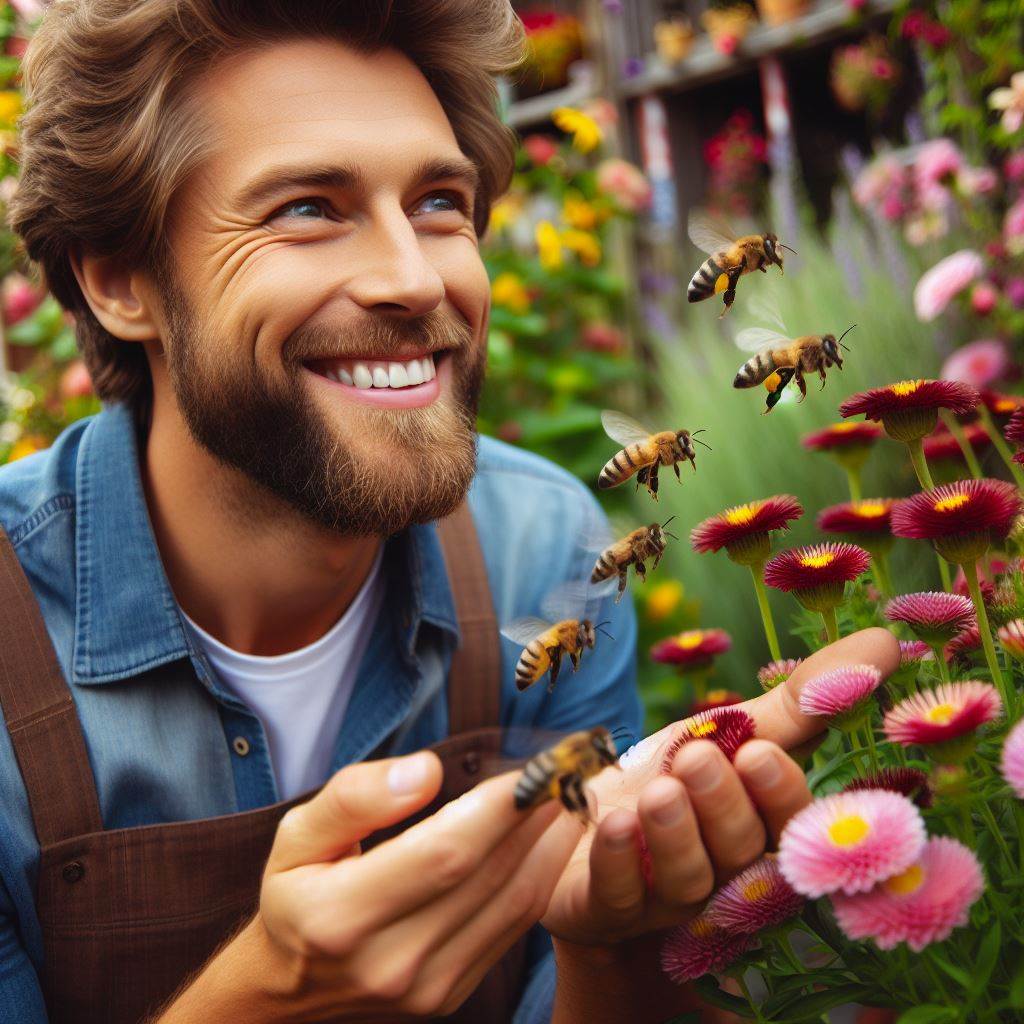
Minimizing Harmful Pesticide Use
Understanding the impact of pesticides on pollinators
- Pesticides can have detrimental effects on pollinators such as bees, butterflies, and birds.
- Studies have shown that pesticide exposure can lead to behavioral changes, immune suppression, and reduced reproductive success in pollinators.
- Chemicals like neonicotinoids and organophosphates can be particularly harmful to bees and other beneficial insects.
- Even low levels of pesticide exposure can have long-term ecological consequences for pollinator populations.
Adopting organic and natural pest control methods
- Choosing organic and natural pest control methods can help protect pollinators.
- Use companion planting to attract beneficial insects that prey on garden pests.
- Biological controls like ladybugs, praying mantises, and nematodes can help control pest populations.
- Implementing crop rotation and mulching techniques can reduce the need for chemical pesticides.
- Avoid using pesticides with broad-spectrum activity that can harm beneficial insects along with pests.
The importance of reading and following pesticide labels
- Reading and understanding pesticide labels is crucial for minimizing harm to pollinators.
- Labels provide important information about the product’s target pests, application rates, and safety precautions.
- Follow the instructions carefully to ensure effective and safe pesticide use.
- Be aware of any specific instructions regarding pollinators, such as application timing to minimize exposure.
- Properly dispose of pesticide containers and never pour unused product down drains or on the ground.
By adopting pollinator-friendly gardening practices, we can play a significant role in protecting and conserving pollinator populations.
Minimizing harmful pesticide use is a crucial step in creating a safe and thriving habitat for bees, butterflies, and other pollinators in our gardens.
Remember, pesticides should be used as a last resort and only when absolutely necessary.
By understanding the impact of pesticides on pollinators, adopting organic and natural pest control methods, and reading and following pesticide labels, we can create a harmonious environment where pollinators can thrive.
You Might Also Like: Soil Health: Key to Thriving Organic Gardens
Gardening Practices that Support Pollinators
Mulching and controlling weeds
- Use organic mulch such as leaves or straw to suppress weeds and retain moisture.
- Avoid using synthetic mulch as it can prevent pollinators from accessing the soil.
- Mulching also helps regulate soil temperature, creating a suitable environment for pollinators.
- Regularly remove any weeds manually to eliminate competition for resources.
Watering and irrigation techniques
- Provide a water source for pollinators, such as a shallow dish filled with pebbles and fresh water.
- Place the water source in a sunny, open area away from potential predators.
- Create small puddles or damp patches in the garden to attract butterflies and bees.
- Avoid excessive watering, as it can drown pollinators’ habitats and disrupt their natural behavior.
Maintaining a diverse and pesticide-free garden habitat
- Plant a variety of native flowers, herbs, and shrubs with different bloom times to ensure continuous nectar and pollen availability.
- Choose plants that provide different colors and shapes to attract a wide range of pollinators.
- Avoid using pesticides, as they can harm not only pollinators but also other beneficial insects.
- Use natural alternatives such as companion planting, beneficial insects, or organic pest control methods.
- Create a habitat with diverse vegetation, including different heights and layers to attract various pollinator species.
- Provide nesting sites for bees by leaving areas of bare ground or adding bee boxes.
- Install butterfly houses and bird feeders to attract pollinators’ predators, which balance the ecosystem.
- Create sheltered areas, such as rock piles or fallen logs, to provide nesting sites and hiding places.
In a nutshell, implementing these gardening practices can greatly support pollinators and contribute to their conservation.
Mulching and controlling weeds provide a nurturing environment for pollinators to access the soil and regulate its temperature.
Proper watering techniques ensure a vital water source without disrupting their habitats.
Maintaining a diverse and pesticide-free garden habitat offers a variety of flowers, herbs, and shrubs that attract and support various pollinator species.
By following these practices, gardeners can play an active role in preserving pollinators and promoting biodiversity in their surroundings.
Gain More Insights: Organic Solutions to Common Plant Diseases
Educating and Encouraging Others to Adopt Pollinator-Friendly Gardening
Sharing information and resources
- Spread the word about pollinator-friendly gardening by sharing informative articles and resources.
- Utilize social media platforms to educate others about the importance of creating habitats for pollinators.
- Create a website or blog dedicated to providing tips, techniques, and resources for pollinator-friendly gardening.
- Share personal success stories and experiences to inspire others to embrace pollinator-friendly practices.
- Collaborate with local gardening clubs or online forums to exchange knowledge and information about pollinator-friendly gardening.
Collaborating with community organizations and schools
- Partner with local community organizations to organize workshops or seminars on pollinator-friendly gardening.
- Collaborate with schools to incorporate pollinator-friendly gardening into their curriculum and activities.
- Offer support and guidance to community organizations and schools interested in creating pollinator habitats.
- Sponsor community garden projects that promote the inclusion of pollinator-friendly plants and practices.
- Encourage community organizations and schools to dedicate areas specifically for pollinator habitats.
Hosting workshops or events to promote awareness and involvement
- Organize hands-on workshops to teach individuals how to create pollinator-friendly gardens in their own homes.
- Host garden tours to showcase successful pollinator habitats and inspire others to adopt similar practices.
- Coordinate educational events featuring expert speakers and demonstrations on pollinator-friendly gardening.
- Collaborate with local farmers markets or garden centers to host pollinator-themed events or workshops.
- Create interactive activities and games for children to learn about the importance of pollinators in gardening.
By actively engaging in these education and outreach efforts, we can create a widespread movement towards pollinator-friendly gardening.
Together, we can build a future that is not only beautiful but also sustainable and supportive of our vital pollinators.
Let’s spread the word and inspire others to become pollinator champions in their own communities.
Conclusion
Pollinator-friendly gardening plays a crucial role in the preservation of our ecosystem.
By creating a welcoming habitat for bees and other pollinators, we are supporting the reproduction of plants and ensuring food security for future generations.
It is not just about pretty flowers but also about the interconnectedness of all living beings.
As readers, you have the power to make a difference.
Take action by implementing pollinator-friendly practices in your own garden.
Plant native flowers, provide nesting sites, and avoid harmful pesticides.
Small steps like these can have a significant impact on pollinator populations and contribute to the overall health of our environment.
By supporting pollinators in our gardens, we are not only beautifying our surroundings but also fostering biodiversity and promoting sustainable agriculture.
The buzzing bees, fluttering butterflies, and humming hummingbirds will create a symphony of life that enriches our lives and the world we live in.
Let us appreciate the wonders of nature and pledge to be guardians of these magnificent creatures.

